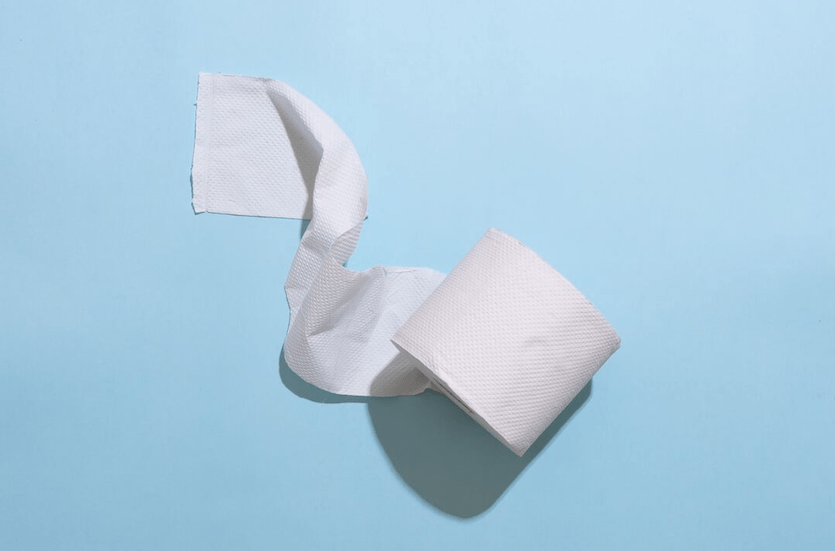3 REASONS WHY URINE TESTS COULD BE FAILING YOU & WHAT TO DO INSTEAD.
What do you do when all your tests look "normal" but peeing still hurts like hell?
When I first started out on my IC journey I could not understand how it was possible for all my tests to come back "normal". Time... and time... again.
I had all the symptoms of a urinary tract infection (frequency, urgency, burning pain) and felt chained to my house. Yet doctors kept telling me everything looked “normal” and there was nothing more they could do. It was likely interstitial cystitis and I would just have to learn to live with that.
I was petrified!! Was this how life was going to feel from now on??
Fast forward to 2023...
Advances in urinary analysis and our understanding of the urinary environment have come on leaps and bounds. It's now possible to detect bacteria based on their genetic material. It’s called PCR urine analysis (you may recall PCR testing from Covid hell?).
It's a urine test I use with my 1-1 clients to help identify what's really going on and what needs prioritising in terms of nutrition and supplements. I really wish this had been available when I was diagnosed with interstitial cystitis!
CAN I ASK MY DOCTOR TO RUN A PCR URINE TEST?
If you've been told all your tests look "normal" despite all your symptoms remaining, you're probably wondering what other tests you can do for interstitial cystitis. I want you to know that DNA-based testing methods such as PCR urinary testing could be a great option.
Unfortunately, doctors and public health services (like the NHS and HSE) are still reliant on older culture based testing methods, which while helpful in first line therapy, have many limitations.
In this blog post, I explain 3 reasons why conventional urine tests could be failing you and what to do instead to find freedom from painful bladder conditions including chronic or embedded UTIs, and interstitial cystitis.
1. STANDARD UTI TESTING CAN MISS INFECTION
For a long time, it’s been thought that >70% of UTI were caused by the bacteria ecoli. But it’s possible this data is skewed because diagnostic methods have simply been more prone to identifying E. coli.
Standard culture tests are highly sensitive to E. coli but detect as little as 12% of other clinically significant species. UTI’s can be caused by many pathogens, not just E. coli. The most common suspects are:
Uropathogenic Escherichia coli (UPEC)
Klebsiella pneumoniae
Enterococcus faecalis
Proteus mirabilis
Add to this, the traditional assumption that when more than one species shows up in a conventional urine culture test it is deemed mixed species due to contamination (e.g. from the environment, or from the skin), rather than acknowledging the possibility of a mixed species contamination within the bladder.
On this basis, your sample is likely to be rejected.
With DNA testing however, we are looking at everything that’s present and not necessarily concluding "this is a result of contamination". It’s actually what's going on in terms of mixed species within the bladder.
What else makes DNA tests different to urine culture tests?
Another limitation of culture methods is that they rely on enough bacterial cells in the urine sample multiplying in a laboratory setting. Some bacteria grow easily in culture, while others struggle. This creates massive room for error!
With PCR test methods, there's less margin for error. We don’t have to rely on enough bacterial cells surviving on a culture plate in a lab. We get that lower threshold and pick stuff up more efficiently with DNA.
Can you start to see how a urinary tract infection could easily get missed if all your tests so far have been urine culture tests?
2. STANDARD UTI TESTS DON’T RECOGNISE THE “FRIENDLY BACTERIA IN YOUR BLADDER
It was long thought that the urinary bladder was sterile, and bacteria were only present during times of acute infection.
We now know that’s not true!!
Thanks to advances in urinary testing methods, including DNA based technologies, scientists now know populations of bacteria exist inside our bladder at all times, not only during an acute infection. Just like in our gut and vagina, our bladder has its own family of “friendly” bacteria (collectively termed, our urinary microbiome) some of which contribute to urinary health and may even help to prevent infection.
This is ground-breaking considering only a few years ago scientists believed the bladder was completely sterile!
An imbalance of “friendly” bacteria in the bladder, has been associated with a multitude of disorders, including recurrent and chronic urinary tract infections and interstitial cystitis. So choosing a PCR urinary test that includes markers for friendly bacteria (and not just the baddies) helps to identify what's really going on at a deeper level.
Can you start to see how standard urine culture could be limiting? Standard UTI testing ignores a big chunk of the picture.
Running a urinary microbiome test like the one I use with my clients helps us to decide if antimicrobial supplements are appropriate, or if we need to nurture our community of urinary microbes. It's all about balance.
Find out how I can help you heal your bladder here.
3. STANDARD CULTURE TESTS IGNORE YOUR OVERALL BLADDER ENVIRONMENT
Within our communities of bacteria not only do we have "good" and "bad" bacteria, we also have pathobionts, a type of bacteria that sits somewhere in between.
These microbes have the potential to turn nasty... if given the opportunity. Let's call them the opportunists.
Opportunistic bacteria are present in our normal ecosystem (AKA our microbiome) but when they turn up in the wrong place at the wrong time they can cause symptoms.
Take for example strep throat.
This is caused by a type of streptococcus that nearly all of us carry in our noses. It is a normal part of our microbiome. But if it gets into the wrong place, or if a person becomes run down, or stressed and our defences are down... now there is a disruption in our microbiome and we become unwell.
So for instance, if we’re:
chronically unwell
stressed out
on long term antibiotics
We're depleting our "good" bacteria and our immune system can start to struggl.e.
We risk creating the perfect environment in our bladder for the pathobionts to take the opportunity to thrive and create inflammation, urinary urgency, frequency and other UTI-like symptoms.
The same goes with E. coli.
Some E. coli are professional pathogens. If you eat contaminated food it could kill you within 48 hrs. But E. coli is a very large species with a lot of variability. Some kill and others can form a normal part of our microbiome. So determining which E. coli is present and how dominant it is in a urine sample can mean different things.
Standard urine cultures don't report the "good" bacteria or the pathobionts but the PCR urinary microbiome test I use with my clients measures everything - the good, bad and opportunistic bacteria. We're painting a picture of the whole environment inside the bladder.
Armed with this knowledge we can tailor nutritional recommendations to support a healthier balance of bacteria and reduce our risk of UTI symptoms.
HOW NUTRITIONAL THERAPY CAN HELP IC & UTI SUFFERERS
Current treatment for interstitial cystitis and chronic UTI is typically with long term antibiotic therapy – in an overall attempt to achieve sterility of the bladder. But now we know the bladder is not supposed to be sterile… and recurrence of UTI is common, possibly due to overlooking the overall environment that maintains a health bladder in the first place plus a need for added immune support, among other things.
This is where tailored nutrition and supplements can really make a difference to your IC healing journey and it's why I created my Heal your Bladder programme to help you do just that.
Ready to find relief?
Free resource
Do your tests look '“normal” but peeing still hurts like hell? You can now access my free webinar with advice on what you should do next.





